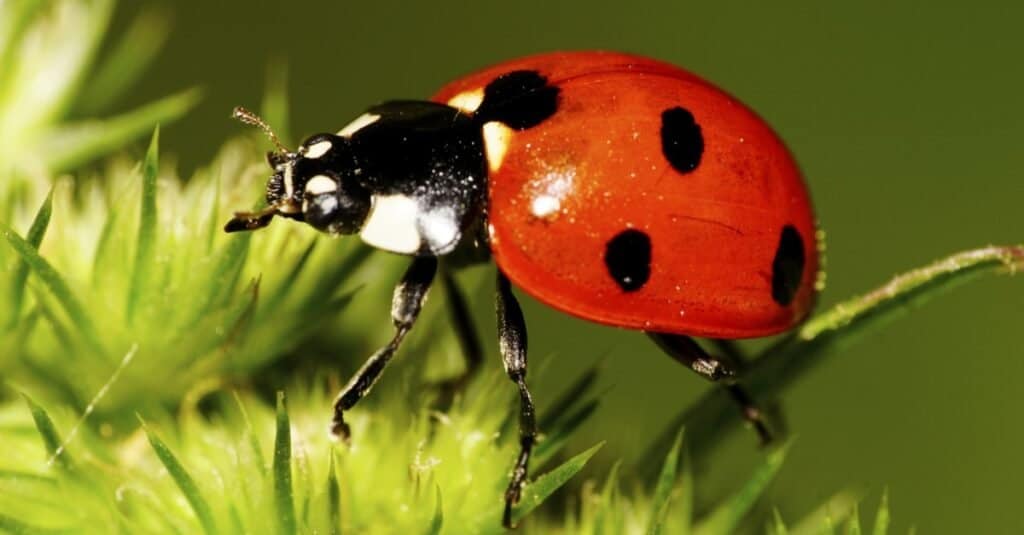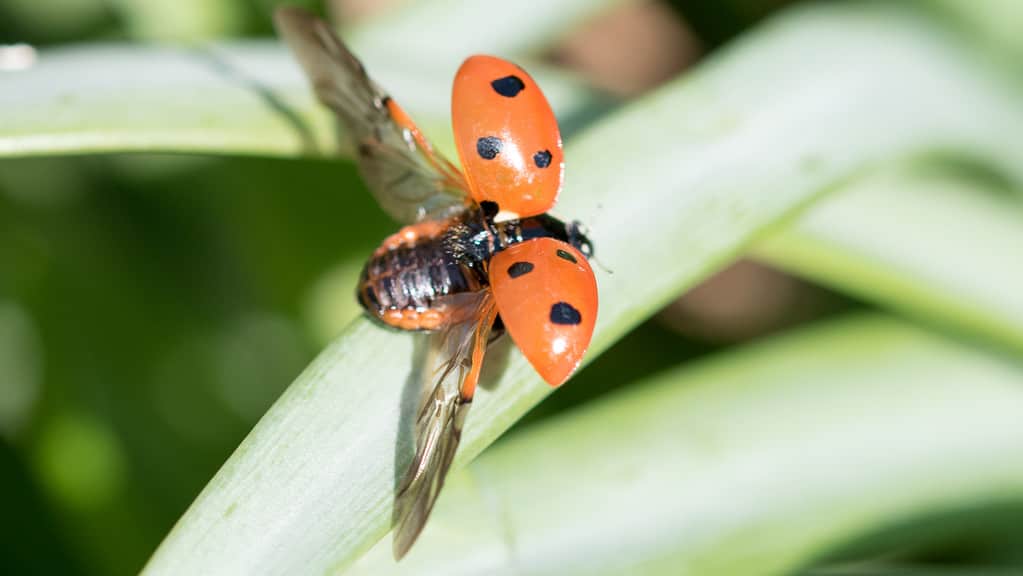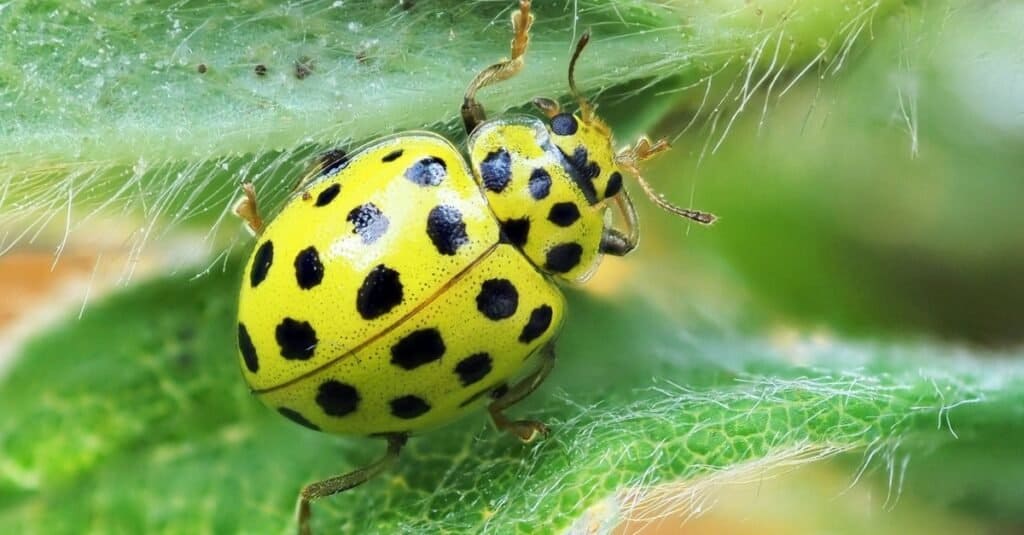The northern cardinal was named the state bird of Ohio in 1933, becoming the first official animal symbol of the Buckeye State. It would be the only state animal symbol for 42 years until finally, in 1975, Ohio legislators named a second animal symbol for the state. This time it was a state insect. Senate Concurrent Resolution 14, 111th General Assembly, 1975-1976 Session declared the official Ohio state insect is the ladybug.
Her second and third-grade students decided the ladybug should receive state designation. The students offered multiple arguments in support of the ladybug as Ohio’s state insect. First of all, the children noted that the ladybug is red, just like Ohio’s state bird and state flower (red carnation). More importantly, these students noted that ladybugs are valuable to farmers and gardeners because they prey on harmful insects such as aphids.

A Toledo teacher and her students championed the ladybug as the best choice for Ohio’s state insect.
This classroom lesson progressed into a lobbying campaign. Petitions were signed and letters were sent to state lawmakers requesting official state status for the ladybug. In 1975, two years after the discussions began in Mrs. Michaelis’ elementary school classroom, Ohio legislators made the designation official.
According to the Ohio General Assembly’s resolution: “The ladybug is symbolic of the people of Ohio–she is proud and friendly, bringing delight to millions of children when she alights on their hand or arm to display her multi-colored wings, and she is extremely industrious and hardy, able to live under the most adverse conditions and yet retain her beauty and charm, while at the same time being of inestimable value to nature.”
A Resolution, But Not a Law
Interestingly, the declaration of Ohio’s state insect was made by a concurrent resolution, not actual legislation. That may seem like splitting hairs, but there is a significant difference. A law requires the signature of the governor, but a resolution does not.
The ladybug became Ohio’s state insect by resolution, but it never became law. The governor signed no legislation and nothing was ever filed with the Secretary of State.
The ladybug is the only Ohio animal symbol to be designated by such a resolution. All the others were signed into law. The only other Ohio state symbol adopted by resolution is the official state rock song, “Hang on Sloopy.” The song, which is a staple at Ohio State football games, was named the official rock song of the state by concurrent resolution in 1985.
While “ladybug” is its most common name, the insect is not a true bug. It is a beetle. In Europe, it is known as the “ladybird beetle.” Variations of this name are attributed to a legend involving a group of farmers whose crops were plagued with aphids. They prayed to the Virgin Mary for help, and that help arrived in the form of these beetles that consumed the aphids. The insect became known as “Our Lady’s beetle,” and variations thereof.

Aphids are the ladybug’s preferred prey.
Both the European legend and Mrs. Michaelis’ students recognized the ladybug’s importance to agriculture. These beetles predate crop-destroying insects such as aphids. In fact, one ladybug can eat 50-75 aphids per day. The beetle also feeds on scale, mealybugs, mites, thrips, whiteflies, and other destructive insects.
Body Composition
Ladybugs are small, round beetles with colorful wing covers known as elytra. Depending on the species, ladybugs can be red, orange, or yellow. Many feature the trademark black spots that most people associate with ladybugs. However, some species are solid black.
The beetles have an exoskeleton that is made from ‘chitin’ – a strong protein similar to what makes human hair and nails.
Like all insects, the ladybug is a hexapod (it has six legs). The ladybug’s body is comprised of three parts: the head, thorax, and abdomen. The head contains the mouth, eyes, and antennae. The thorax is where the legs and two pairs of wings are located. The abdomen contains digestive, respiratory, and reproductive organs.

Like all beetles, ladybugs have two sets of wings.
Species and Colors
This beetle is found in all of Ohio’s 88 counties. There are over 450 species of ladybug in North America and more than 5,000 worldwide. However, Ohio legislators did not name a specific ladybug species as the state insect.
The ladybug’s lovely colors are admired by people young and old. In fact, a group of ladybugs is called a loveliness! But the insect’s colors have a purpose beyond simple beauty. The vibrant colors serve as a warning to would-be predators such as birds, frogs, wasps, dragonflies, and spiders. When a ladybug is threatened, it secretes toxins from the joints in its legs, a function known as reflex bleeding. Predators learn to associate the ladybug’s bright colors with these foul secretions and they steer clear.

The bright colors of a ladybug are a warning sign to potential predators.
Where Do Ladybugs Go In Winter?
Winter in Ohio can bring some nasty weather with lots of snow and bitterly cold temperatures. Ladybugs gather in large groups to dispause (the insect version of hibernation) for the winter. They gather together under the cover of logs, trees, as well as manmade structures. The beetles can survive off their reserves for as long as nine months, though the ladybug dispause is rarely that long in Ohio. Once the temperature hits 55°F, the beetles break out of dispause and begin searching for food.








